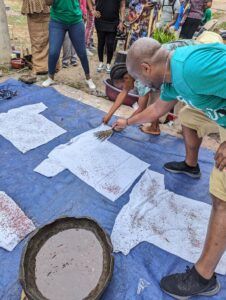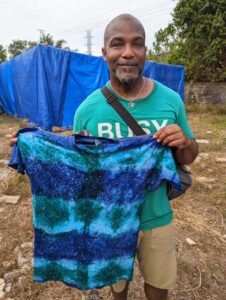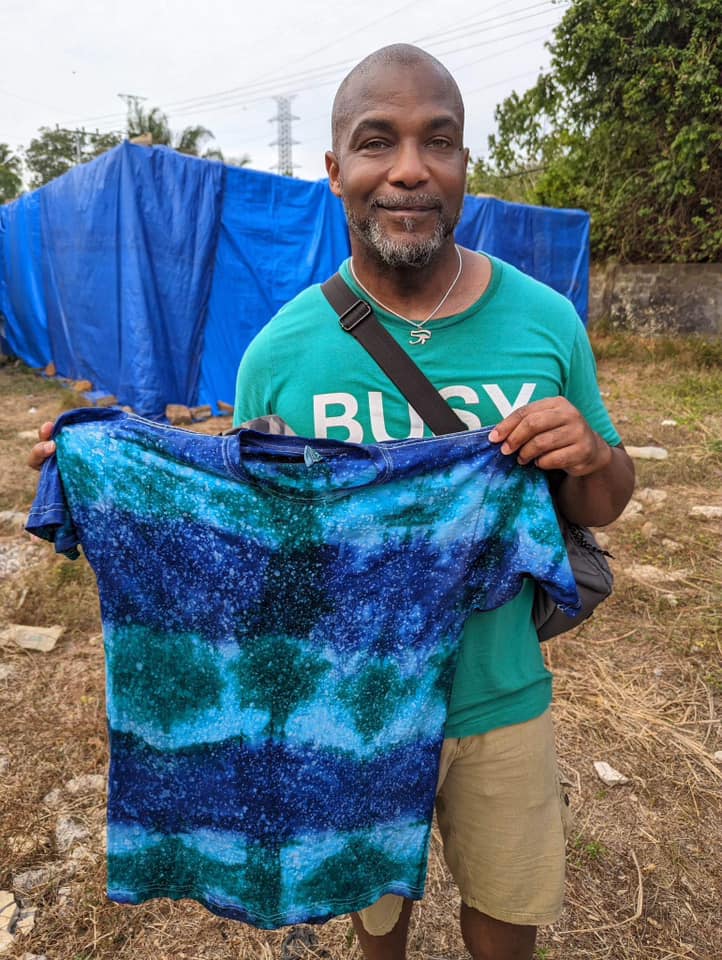Activity 1 of Journey to Dual Citizenship in Sierra Leone. Freddie explored a tie-dye technique using a natural waxing method. This technique is widely used by local artisans to create vibrant and colorful patterns on fabrics that are both striking and beautiful.

The tie-dying waxing technique is also known as batik, and it involves using wax to resist dye on fabric. The process is quite intricate and requires a great deal of skill and patience. The fabric is first washed and dyed in a base color, usually blue or brown. Once the fabric is dry, the artisan applies hot wax in a pattern, using a tool called a tjanting, which resembles a small spout with a metal tip.
The waxed areas of the fabric resist the dye when submerged in a second dye bath. The wax is then melted off, revealing the contrasting pattern of the original base color and the new dye color. The process can be repeated with multiple colors to create complex and layered patterns.
One of the most fascinating aspects of this technique is the fact that it has been practiced in Sierra Leone for centuries. It is believed to have originated in Indonesia and was brought to West Africa through trade routes during the colonial period. Today, it is a vital part of Sierra Leonean culture, and many local artisans continue to practice this ancient craft.
Freddie was excited to experience getting his hands dirty a learning an ancient craft. The results were beautiful.

Are you ready to learn about your African Ancestry? Click Here to start your journey. Would you like to follow Freddie Journey? Join our Facebook Group “Urban Intellectuals Travel Movement”


